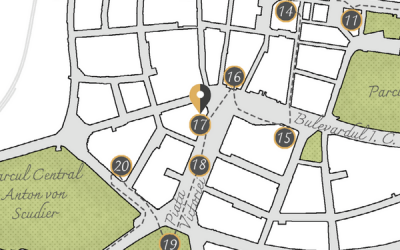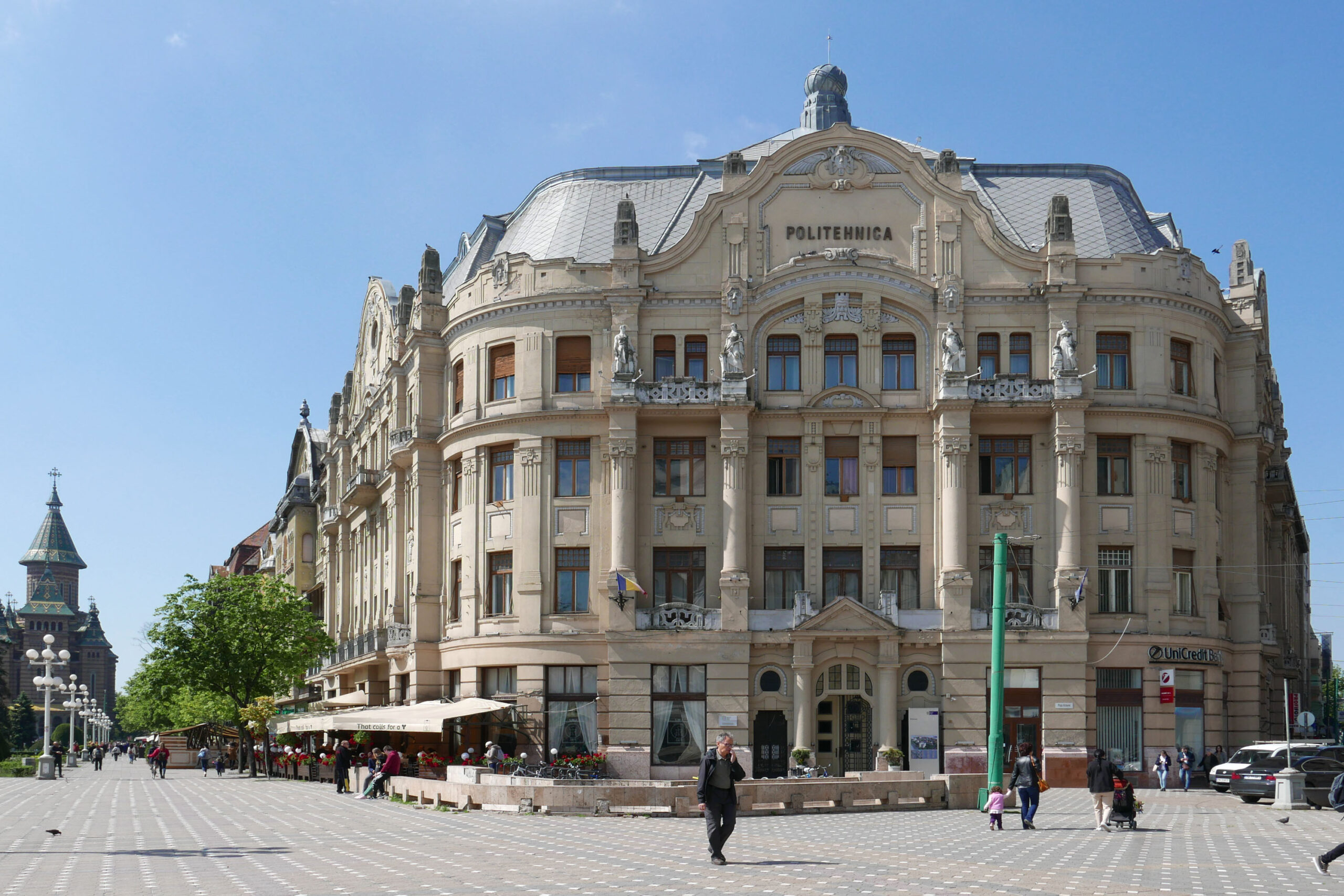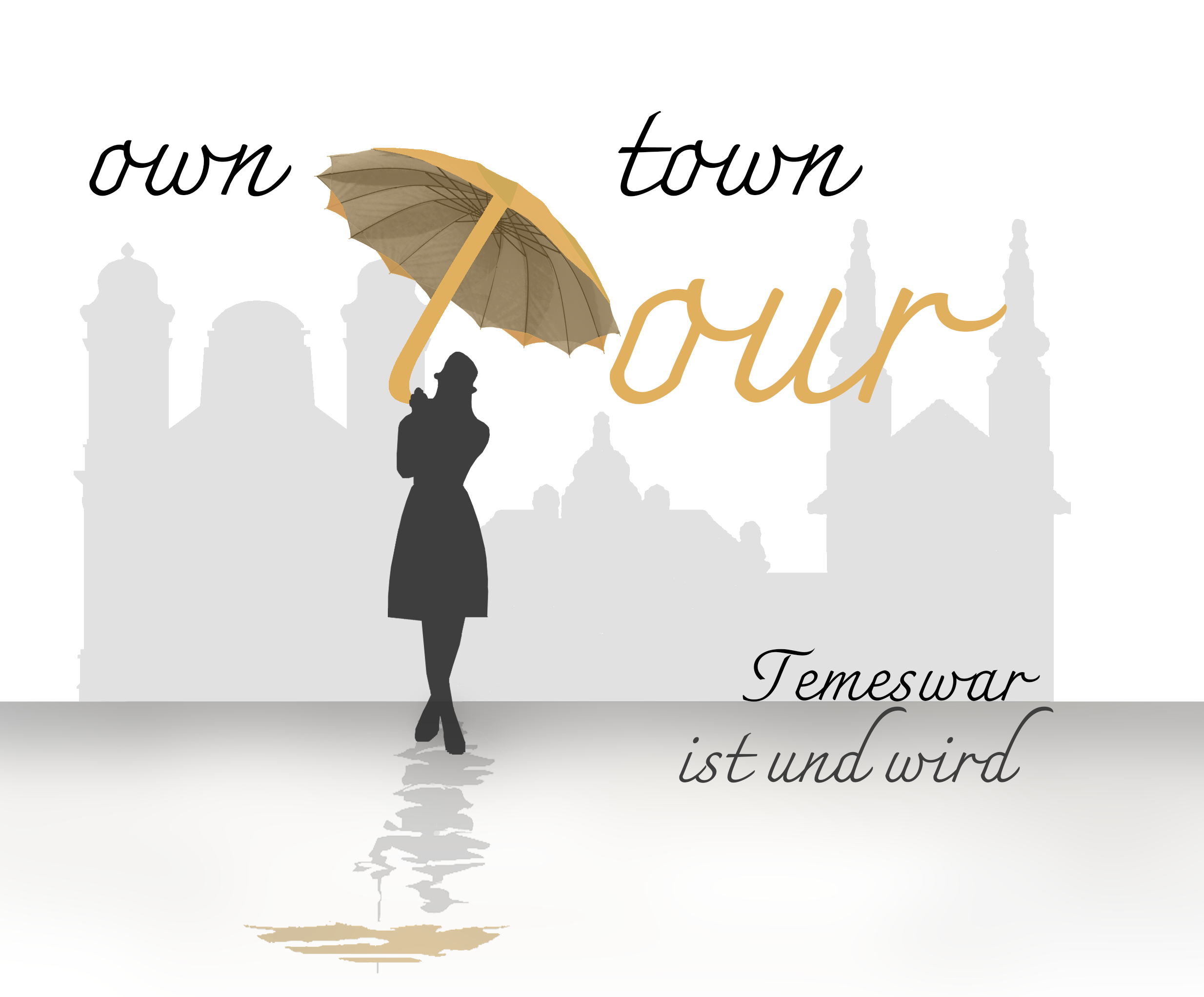Victory Square
Piața Victoriei, 2
from 1910


The Centre of the 20th Century
The street colloquially known as “Lloyd’s Line” in Timisoara is now part of the “Piata Victoriei”, the third largest city square of Timisoara. Built after the demolition of the fortress on the former Glacis, it extends from the opera building to the Romanian Orthodox cathedral. The street is lined, on both sides, with magnificent buildings from the beginning of the 20th century, and in the middle, there is a wide green strip with flowers and shrubs.
The first impressive building on the square is the Palais Weiss, built in 1912 by László Székely and Anton Merbl for the entrepreneurial Weiss family in Eclectic style with Baroque and Art Nouveau elements of the Viennese Secession style. It is located next to the Opera House and today’s Hotel Timișoara.
The eponymous palace, which walkers stroll past, is Lloyd‘s Palace, and was built between 1910 and 1912 in Eclectic architectural style. The row of buildings is also named after it and called Lloyd’s Line. On the first floor were the headquarters of Lloyd’s of London insurance as well as a trading exchange for agricultural products. Café Vienna was on the ground floor and was a meeting place for prominent personalities.
Adjacent to the row of houses is the Palais Neuhaus, built in 1912, also in the Eclectic architectural style with elements of Baroque and Viennese Art Nouveau by the architect László Székely.
Following is Palais Merbl which was built in 1911 according to the plans of the architect Arnold Merbl, again in Eclectic style with elements of the Baroque and Viennese Secession styles.
Next to it, is the Palais Dauerbach. It was built between 1911 and 1913 according to the plans of László Székely as a residence for Georg Dauerbach. The impressive building has a high, dark façade with elements of Baroque and Viennese Art Nouveau with contrasting ceramic works and stands out in the row of buildings.
From the beginning there was a café and restaurant on the ground floor. The restaurant “Palace” had long been one of the most beautiful and elegant restaurants in the city and was very popular among the city’s youth in the first half of the 20th century, especially because of its live music.
The Hilt & Vogel Palais was built between 1912 and 1913 according to plans by László Székely. He also created the plans for the last imposing building in the row, namely the Széchényi Palace, built between 1910 and 1914.
To the left of the Opera House, in the direction of the Hunyadi Castle, is the Löffler Palais, built as a residential, business and apartment building for the Löffler family in Eclectic style.
Adjacent to it is the Chamber of Commerce Palace, built in 1933 after a long break due to the First World War, and thus belonged to the later works of the former city architect Székely.
Tour sights
- 1. Theresia Bastion
- 2. Lutheran Church
- 3. Union Square
- 4. Saint George’s Cathedral
- 5. Serbian Orthodox Cathedral
- 6. Miksa (Max) Steiner Palace
- 7. Brück House
- 8. Dicasterial Palace
- 9. Klapka Library
- 10. The “Guild Tree”
- 11. St. George's Square
- 12. Prince Eugene House
- 13. Citadel Synagogue
- 14. Liberty Square
- 15. Huniade Castle
- 16. National Opera House
- 17. Victory Square
- 18. Corso
- 19. Orthodox Cathedral
- 20. Piarist Ensemble
- 21. Reformed Church
- 22. Doja Street
- 23. Journey through Time
- 24. Rose Garden

